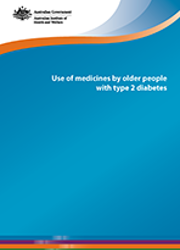PDF report table of contents
Preliminary material: Acknowledgments; Abbreviations
Summary
1 Introduction
2 Data sources and methods
3 Supply patterns of glucose lowering medicines
4 Supply of medicines for common conditions associated with type 2 diabetes
5 Discussion
Appendix A: Data sources and methods
Appendix B: Detailed statistical tables
End matter: Glossary; References; List of tables; List of figures; List of boxes; Related publications



